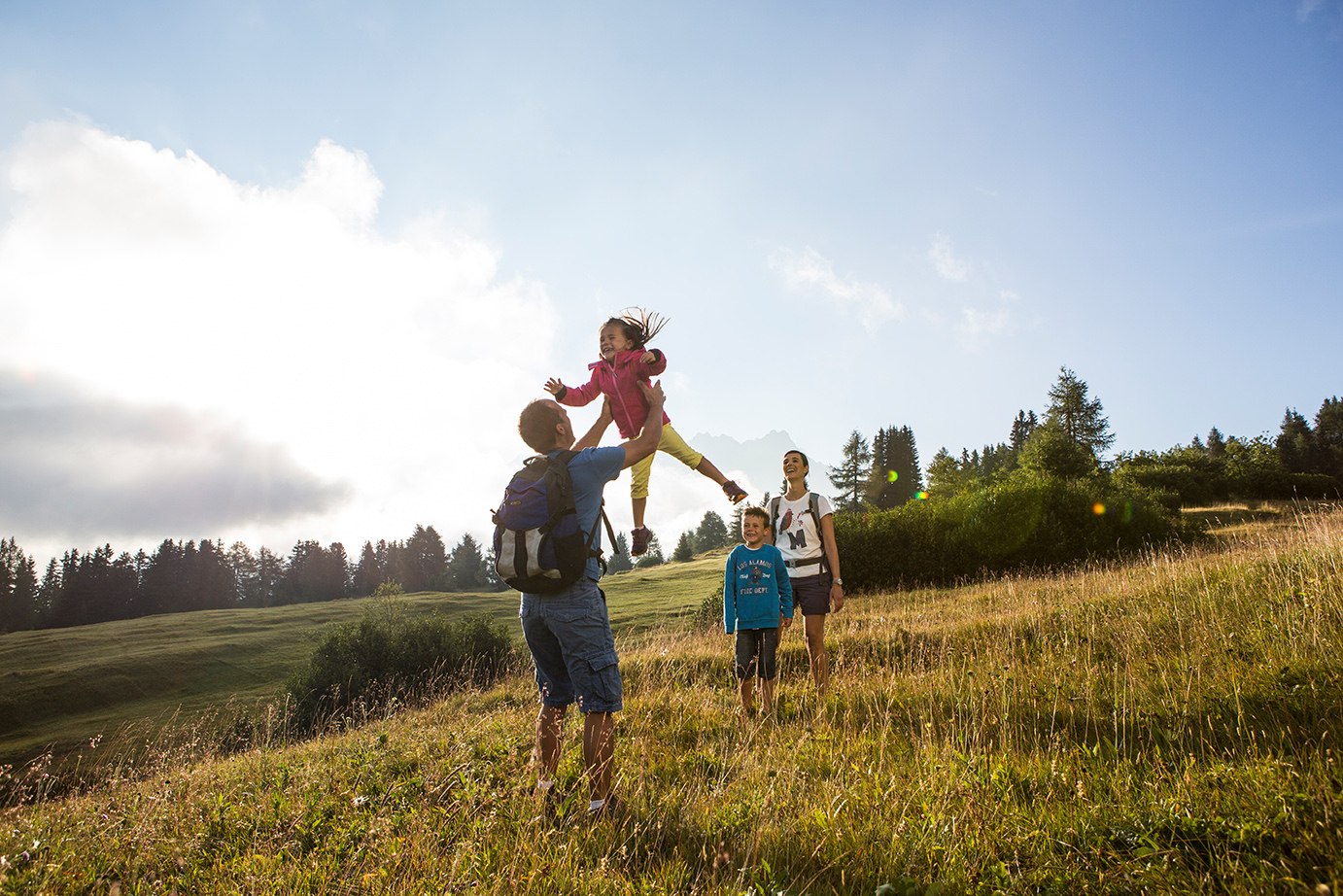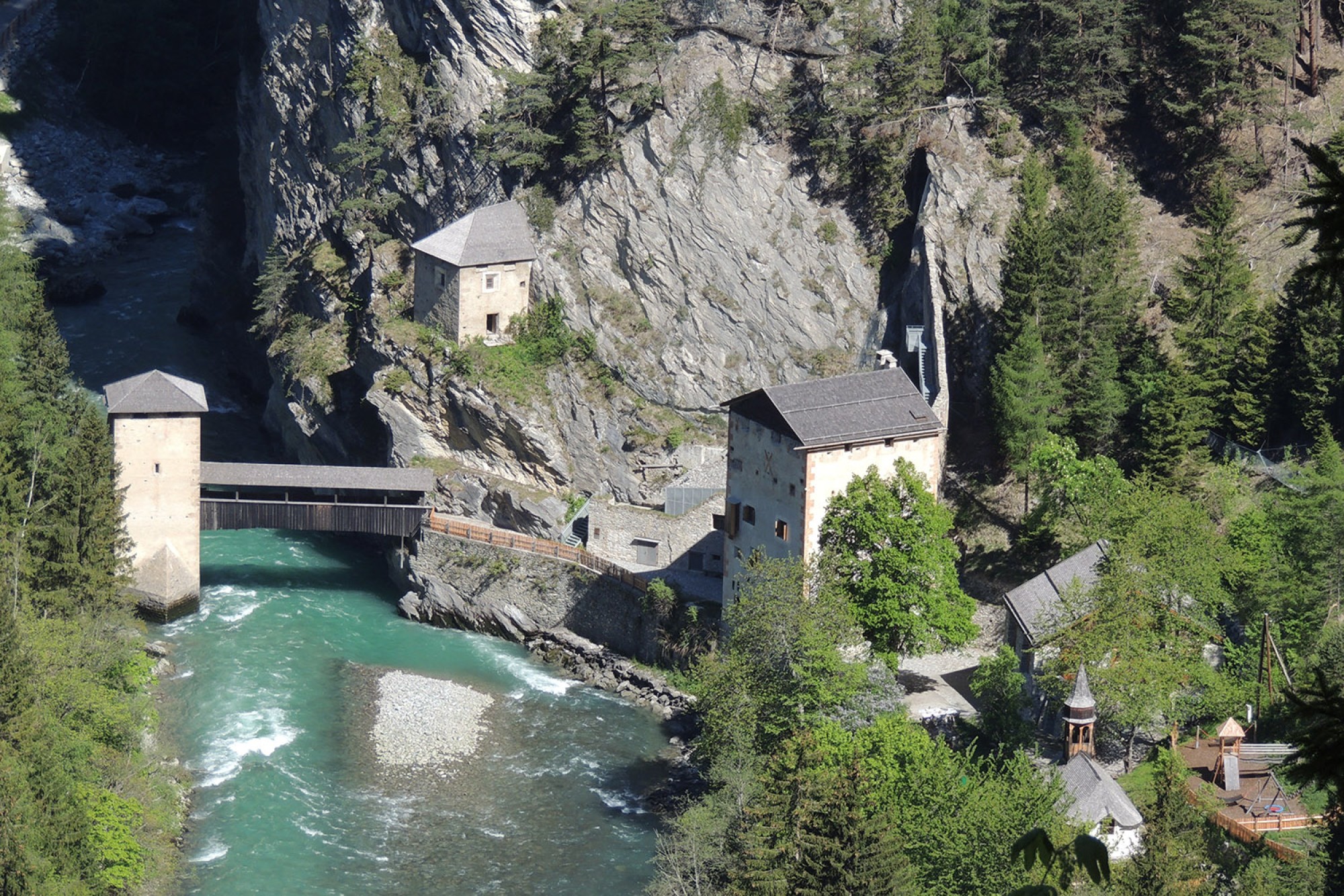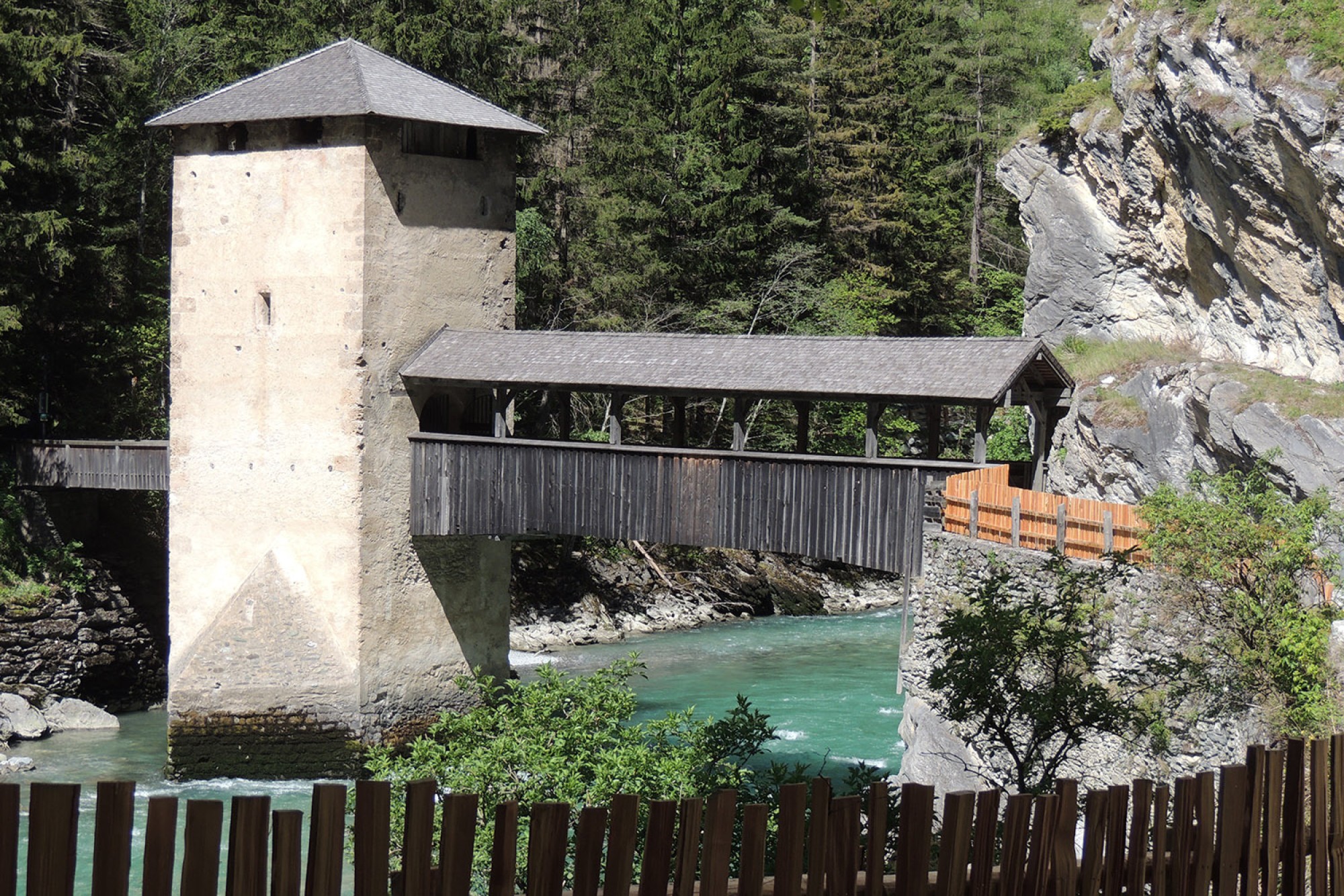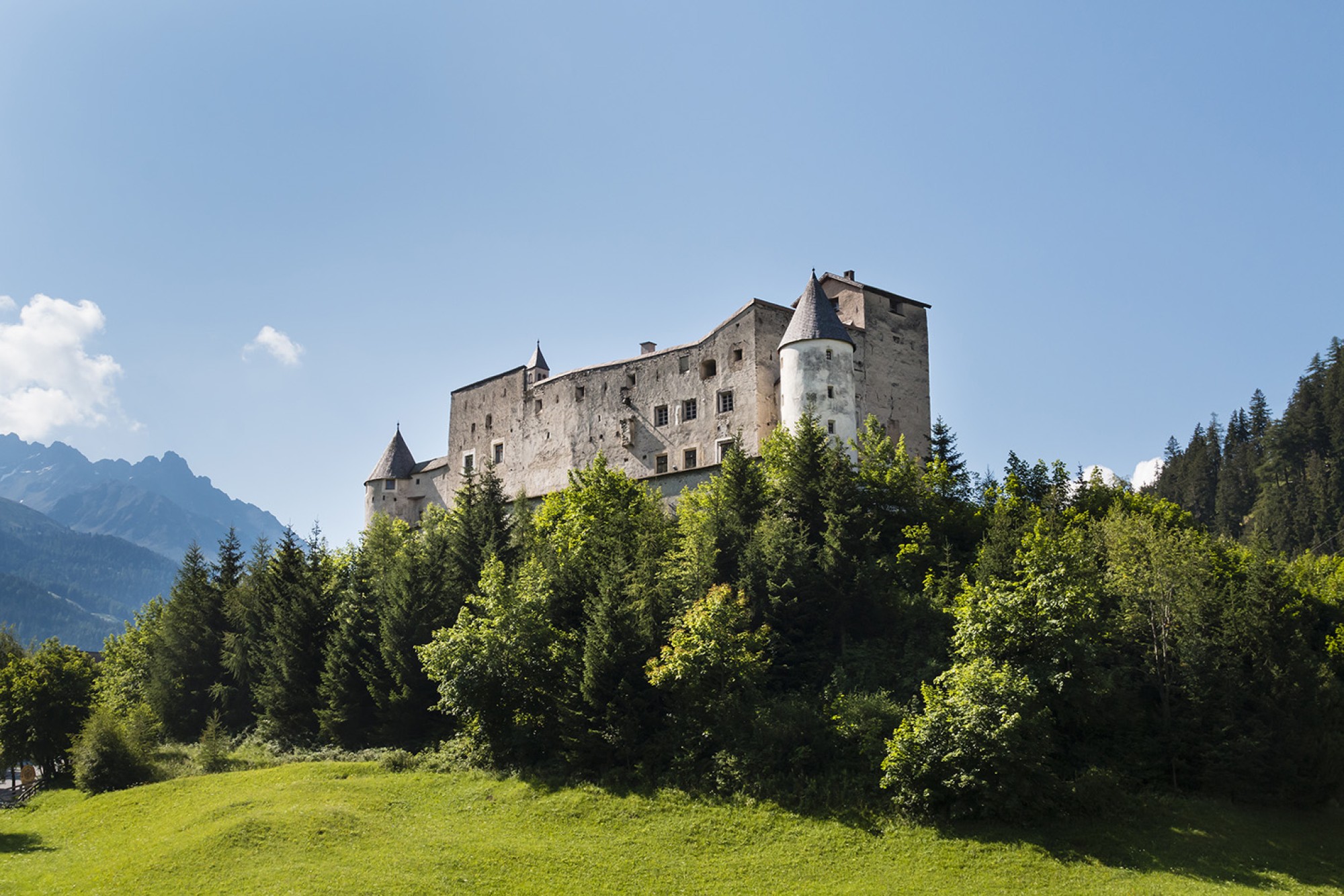Altfinstermünz – from Pfunds to Nauders
Altfinstermünz, the border between Tyrol and Grisons, is accessible via various trails. One trail goes from the Unterengadin to Oberes Gericht, another trail was used already during the Roman era: Via Claudia Augusta.
The hiking trail along Via Claudia Augusta starts in Pfunds, a village neighbouring Nauders. Passing by Minifundus (a museum containing miniature replicas of traditional houses from Pfunds) the hiking trail is fairly flat and runs along the river Inn and the forest to Altfinstermünz. On this trail, you pass derelict houses in Schalkl, a district of Pfunds. Right after Schalkl you cross the old, famous bridge of fort Altfinstermünz. From there, you hike up to Nauders and Hochfinstermünz.
Some Historical Facts:
Initially, from 9th to 11th century, Altfinstermünz was the court of jurisdiction for the regions Unterengadin, Nauders and Pfunds. The word Finstermünz has its origins in the indo-germanic word “mintsja”, which means “dangerously dominant rock”. From the 13th century on, Altfinstermünz charged toll and customs. The chapel “Mariä Himmelfahrt” (Assumption of Mary), on the right side of the fort, was built in 1605.
At the end of the 17th century, the customs office was transferred to Martinsbruck in Pfunds and Altfinstermünz became a restaurant and a brewery. In 1799 it was the site of heavy battles during the Coalition Wars. From 1856 onwards, Finstermünz lost its importance due to the completion of the new road from Kajetansbrücke to Nauders. Altfinstermünz became a mere agricultural farm.
The region Oberinntal has a low amount of precipitation which results in an almost Mediterranean-like climate. One of the highlights is the road Reschenstraße, built into the rock walls with bridges and tunnels. Fort Altfinstermünz has always been a strategically important place for the entire region due to its special location perching impressively over the valley Inntal. Both fort Altfinstermünz and Nauders, as well as the castle Naudersberg, are located along the historically important route “Via Claudia Augusta”. As you can see, there is a lot of history to discover in our region.





